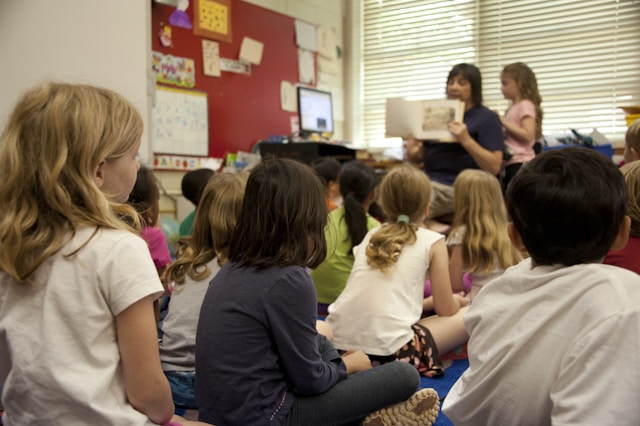In today’s fast-paced world, where academic achievement often takes centre stage, it’s easy to overlook a crucial aspect of a young person’s development: their ability to understand and manage their emotions, build strong relationships, and make responsible decisions. This often-overlooked skill set is known as Social and Emotional Literacy (SEL), and it’s rapidly gaining recognition as an essential part of holistic education and wellbeing.
In Australia, discussions around student wellbeing are more prevalent than ever, with a growing understanding that a child’s emotional state significantly impacts their capacity to learn and thrive.
Unpacking Social and Emotional Literacy: More Than Just 'Being Nice'
At its core, SEL is the process through which individuals acquire and effectively apply the knowledge, attitudes, and skills necessary to understand and manage emotions, set and achieve positive goals, feel and show empathy for others, establish and maintain positive relationships, and make responsible decisions. It’s not simply about ‘being nice’ or having good manners; it’s about developing a profound understanding of oneself and others, leading to more fulfilling lives and stronger communities.
Think of it as developing a comprehensive toolkit for life. When a child learns to identify that they’re feeling frustrated, rather than lashing out, they can choose a constructive way to express that emotion. When they can empathise with a classmate who is struggling, they are more likely to offer support rather than judgement. These are the building blocks of resilience, empathy, and effective communication – skills that extend far beyond the classroom.
The Collaborative for Academic, Social, and Emotional Learning (CASEL), a leading organisation in the field, identifies five core social emotional competencies that form the framework of SEL:
- Self-awareness: Recognising emotions, strengths and values
- Self-management: Regulating emotions, thoughts and behaviours in different situations
- Social awareness: Showing empathy and understanding for others
- Relationship skills: Communicating clearly, listening actively, and cooperating
- Responsible decision-making: Making respectful, ethical, and constructive choices
These five competencies are interconnected and build upon one another, forming a holistic approach to personal and social development.

Examples of SEL Activities for Kids
SEL is most effective when it’s embedded into everyday routines and learning. Fortunately, there are many age-appropriate SEL activities for kids that schools and families can implement. Here are a few examples:
For Early Childhood:
- Feelings Faces Chart: A daily check-in where children point to the face that matches their emotion
- Storytime with Emotion Themes: Reading books that explore emotions like anger, sadness or happiness, followed by discussion
- Mindful Breathing: Practising belly breathing with soft toys or simple visual cues
For Primary School:
- Circle Time Discussions: Group conversations about kindness, inclusion, or managing disappointment
- Emotion Journals: Simple daily reflections where students write or draw how they felt during the day
- Role Play Scenarios: Acting out conflict resolution or decision-making situations
For Secondary School:
- Goal Setting Exercises: Helping students set and review personal, academic or social goals
- Debate with Empathy Focus: Encouraging students to argue opposing views while considering different perspectives
- Service Projects: Building social awareness and responsibility through community involvement
These activities aren’t just ‘extras’ – they’re integral to a holistic education that values both academic and emotional growth.
Why is SEL Important? The Benefits of SEL in Schools and Beyond
The integration of SEL into educational settings is not merely a trend; it’s a fundamental shift in how we approach the development of young people. The evidence base for the benefits of SEL in schools is compelling, demonstrating positive impacts on academic achievement, mental health, and future life success.
1. Enhanced Academic Performance
While it might seem counterintuitive, focusing on emotional wellbeing can significantly boost academic outcomes. Students who possess strong SEL skills are better equipped to manage stress, concentrate in class, and engage effectively with their learning. They are more likely to be motivated, persist through challenges, and participate actively. Research consistently shows a positive correlation between SEL programmes and improved grades, attendance, and test scores. A calmer, more focused, and emotionally regulated student is simply a better learner.
2. Improved Mental Health and Wellbeing
In an era where childhood anxiety and depression are on the rise, equipping students with emotional regulation strategies is more critical than ever. SEL provides students with the tools to understand and cope with difficult emotions, build resilience, and develop healthy coping mechanisms. By learning to identify triggers, express feelings constructively, and seek support when needed, students are better positioned to navigate the stresses of school and life, reducing the risk of developing more serious mental health issues. This proactive approach to mental wellbeing is a cornerstone of a supportive school environment.
3. Cultivating Positive School Climates
Schools that prioritise SEL often experience a tangible shift in their overall atmosphere. When students feel safe, respected, and understood, the entire school community benefits. Bullying incidents decrease, conflicts are resolved more peacefully, and a greater sense of belonging flourishes. SEL fosters empathy and respect for diversity, creating an inclusive environment where every student feels valued and supported. This positive school climate, in turn, enhances learning and engagement for all.
4. Preparing Students for Future Success Beyond the Classroom
The skills fostered through SEL are not just valuable within the confines of the school gates; they are essential for success in all aspects of life. Employers consistently rank social and emotional skills – such as communication, teamwork, problem-solving, and adaptability – among the most sought-after attributes in the workforce. Developing emotional intelligence in education sets students up for thriving careers, healthy relationships, and active participation in their communities. In a rapidly changing world, the ability to adapt, collaborate, and manage complex social situations is paramount.
5. Reduced Behavioural Issues
When students are better able to understand and manage their emotions, and communicate their needs effectively, disruptive behaviours often decrease. SEL programmes equip students with strategies to resolve conflicts peacefully, manage frustration, and make responsible choices, leading to fewer disciplinary issues and a more productive learning environment for everyone.
The Australian Context: Nurturing Resilient and Empathetic Citizens
In Australia, the emphasis on student well-being aligns perfectly with the principles of SEL. The Australian Curriculum, Assessment and Reporting Authority (ACARA) recognises the importance of general capabilities, which include personal and social capability – directly mirroring the core tenets of SEL. This national focus underscores the understanding that educating the whole child is paramount.
As we look to the future, equipping young Australians with strong social and emotional literacy will be vital. It’s about nurturing not just intelligent individuals, but resilient, empathetic, and responsible citizens who can contribute positively to their communities and navigate the complexities of life with confidence and grace. By prioritising SEL, we are investing in a healthier, happier, and more harmonious society for generations to come. It’s an investment that pays dividends, not just in academic success, but in the profound wellbeing and flourishing of every individual.

